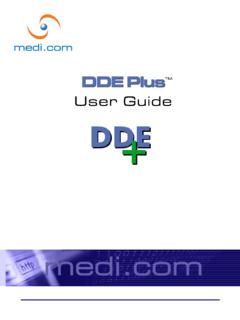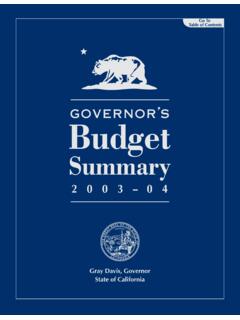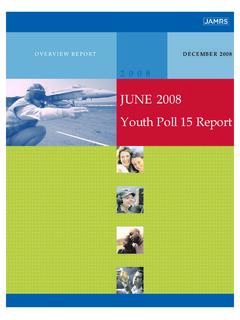Transcription of This page is intentionally blank - California
1 this page is intentionally blank The California Office of Emergency Services (Cal OES) is proud to implement a new Career Credentialing Track to its Emergency Management Professional Development Program. this track charts the path for the future of emergency management by establishing professional standards and reaffirming the competencies (KSA or knowledge, skills, and abilities) needed by all individuals in the field of Emergency Management (EM). It is the primary objective of this track to provide a comprehensive roadmap for individuals seeking a career in EM, experienced practitioners looking to validate and advance their professional capability, and to provide hiring managers with a credentialing standard that they can easily understand and trust.
2 Features of this track include: Tailored for someone who is new to the field and wants to validate their ability/proficiency to do the work of EM during different levels of their career, but also for a experienced or professional emergency manager who is looking to validate their proficiency in the field While traditional testing is a component of this track, key distinguishing features include the clear mapping of KSA to training, education, and experience requirements, as well as a scenario based approach to access proficiency Available for all candidates and required for Experienced and Professional levels The Career Track takes a user driven process, based on established standards. The process consists of several elements including: Emergency Management Career Credentials are valid for a period of 5 years and require annual continuing education and validation.
3 The Cal OES Emergency Management Career Credentialing track has been designed to align with several other State and Federal projects including: Cal OES Professional Certification Program The FEMA National Emergency Management Basic and Advance Academy California Incident Command Certification System Standardized Emergency Management System (SEMS) National Incident Management System (NIMS) California Emergency Services Association (CESA) Emergency Management Competency Framework Learning Standardization .. 8 Career Development .. 8 Recruitment and Retention .. 8 Documentation Standards .. 9 Recertification .. 9 this page is intentionally blank The need to professionalize and provided standards of proficiency in the field of Emergency Management has become evident.
4 As disasters leave their mark on communities, the public s expectations for the standard of performance of career emergency management personnel have There is a need to ensure that those in the field of EM can lead the way, mitigate, prepare for, respond to, and recover from all emergencies. Cal OES Career Credentialing Track acknowledges this need and supports continual EM capability building by setting professional standards and ensuring that candidates vetted through this track are qualified and competent professionals. this program is relevant to all individuals who perform a role in emergency management. this includes full-time, part-time, paid, and unpaid personnel at all levels of government, tribal entities, private organizations, and other non-governmental entities.
5 The program directly supports the responsibility of local, regional, and state agencies in ensuring personnel involved in EM are adequately trained and competent. It provides professional standards, guidelines and reference materials. It also recognizes the professional and personal development needs of EM stakeholders. this Career Credentialing Track provides job seekers, EM professionals, and hiring managers a way to identify measures for professional competencies and defines the basic criteria expected of emergency management personnel for the effective conduct of program management and response/recovery operations. The EM Track Framework is made up of two components: 1. Knowledge (Need to know, legislation, theory, etc.) 2. Competencies (skills and abilities) 1 Accounts from various interviews from individuals currently in the field.
6 The primary focus centers on eight integrated and evidence-based competencies that represent the core elements of EM in California . The eight competencies are: 1. Relationship Management 2. Information Management 3. Risk Management 4. Planning 5. Implementation 6. Communication 7. Capability Building 8. Leadership Each competency is accompanied by observable and measurable indicators described in each of the three credentialing levels in this track. The three levels of proficiency that make up this track are: Practitioner (entry), Experienced (intermediate), and Professional (advanced). New to the field of EM with some but limited experience, looking to support an EM Program and in the process, build knowledge, skills and abilities. Responsibility and areas of focus can include, community preparation, training, administrative and logistical support to experienced or even professional staff in an EM Program.
7 Experienced Practitioner looking to validate Knowledge, Skills and Abilities (KSA) for growth and promotion opportunities in managing specific program areas within an EM Program. Responsibility can lie in one or more phases of emergency management; specialty areas such as planning, training, or exercises; specialty projects such as the development and roll out of a new community program such as CERT, VOAD, POD or Shelters; or even the specification, selection, and roll out of a new mass notification system- to list a few. These individuals may oversee or receive support from practitioners and support/execute on the direction from the professional within their team. Skilled Professional looking to validate Knowledge, Skill and Abilities (KSA) for growth and promotion opportunities directing and leading an EM Program/Organization.
8 this includes the oversight, direction and management of a department or team which will include practitioner and experienced staff. Direct planning, budgeting, contract/service/product and MOU negotiations, and grant administration and forecasting. They serve as spokesperson and representative of their organization in front off local, state, tribal, and federal governments, as well as industry groups. They directly impact or influence emergency management policy and/or governmental/industry regulation. this program framework allows for the following: The comprehensive nature of the program allows for its application across a range of organizations. Core candidate competencies are matched with corresponding and evidence-based training materials and unit standards. this program details a range of roles common in EM, and the knowledge and competencies related to those roles.
9 An individual looking to advance professionally can use this track as a roadmap to identify the necessary competencies and indicators required to progress, either to a different role in a different organization or to a higher role within the same organization. Hiring managers can apply the track s framework to specific EM roles in their organization through the development of: 1. Job specifications 2. Interview questions 3. Personnel development plans 4. Performance Management Systems 5. Career pathways to assist with recruitment and retention Participation in the Cal OES Career credentialing track is voluntary. However, the EM Career Credentialing Review Panel helps ensure that personnel possess the minimum knowledge, skills, and abilities necessary to execute emergency management activities safely and effectively.
10 Documentation ( course certificates) submitted to the Career Credentialing Track must be issued by one of the consortium members referenced on the Cal OES website as being training partners of CSTI. Initial documentation considered for the credentialing program must have been obtained within the past five (5) years. CSTI reserves the right to approve coursework older than 5 years during initial submission provided the request is made in writing. Requests will be granted on a case by case basis. CSTI reserves the right to request course syllabus, description, and certificate of completion for individual assessment. Requirements will be provided by CSTI on behalf of the Review Panel at the time of re-certification. Locate the Career Track Level you want to be credentialed IdentifyRead all level requirements and follow all instructions/guidance provided for CompleteSubmit Application Form with copies of all required application form contains submission SubmitNote: this is a progressive track which means that a practitioner credential must first be obtained before applying for experienced, and experienced before professional.
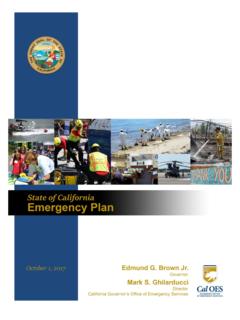

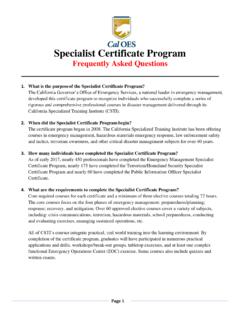
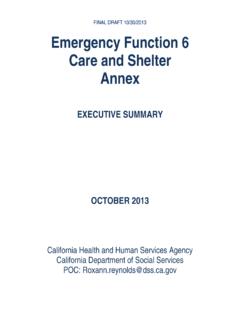
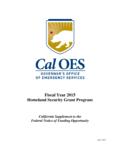
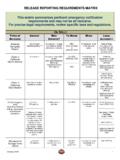
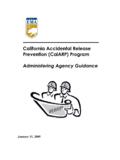
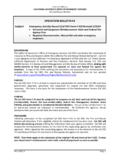
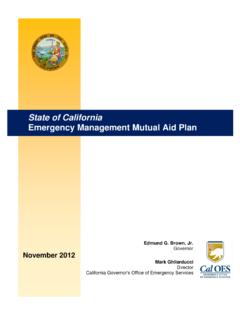
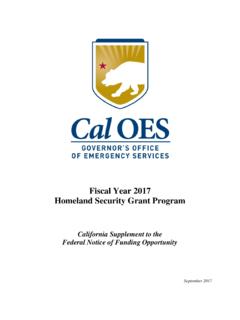
![[Page Intentionally Blank] - Police Executive …](/cache/preview/6/9/5/6/0/0/0/f/thumb-6956000f3f6abdc7d6fe85fa330b8ad5.jpg)


